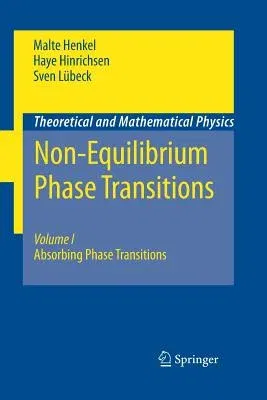1 Introduction. Problems.
2 Survey of Equilibrium Critical Phenomena 2.1 Phase Transitions in
Equilibrium Systems 2.2 Scale Invariance and Universality 2.3 Mean-field
and Renormalisation Group Methods 2.4 Fluctuation-dissipation Theorem
2.5 From Scale-invariance to Conformal Invariance. Problems.
3 Directed percolation 3.1 Directed Percolation at First Glance 3.2
Directed Percolation as a Stochastic Process 3.3 Lattice Models of
Directed Percolation 3.4 Experiments related to Directed Percolation.
Problems.
4 Scaling Properties of Absorbing Phase Transitions 4.1 Scaling in the
Steady State 4.2 Dynamical Scaling Behaviour 4.3 Methods of Analysis 4.4
Other Critical Properties. Problems.
5 Universality classes different from directed percolation 5.1
Parity-Conserving Universality Class 5.2 Voter Universality Class 5.3
Compact Directed Percolation 5.4 Tricritical Directed Percolation 5.5
Dynamical Percolation 5.6 Long-range Interactions 5.7 Manna Universality
Class 5.8 Pair Contact Process with Diffusion 5.9 First-order Phase
Transitions 5.10 Crossover Phenomena 5.11 Quenched Disorder. Problems.
Appendices: A Equilibrium Models A.1 Potts model A.2 Clock model A.3
Turban model A.4 Baxter-Wu model A.5 Blume-Capel model A.6 XY model A.7
O(n) model A.8 Double exchange model A.9 Frustrated spin models A.10
Hilhorst-van Leeuven model B Scaling Laws C Diagonalisation of
Time-Evolution Operators D Langevin Equations and Path Integrals E
Mean-Field Approximations E.1 Simple mean-field/site approximation E.2
Pair-approximation E.3 The 'hop-away' mean-field approximation F On
Finite-Size Scaling Techniques F.1 Sequences of finite-size estimates
F.2 Sequence extrapolation G Numerical Methods G.1 Simulational
techniques G.2 Computation of response functions. Solutions. Frequently
Used Symbols. Abbreviations. References. Index.

